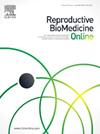The evolution of preimplantation genetic testing: where is the limit?
IF 3.7
2区 医学
Q1 OBSTETRICS & GYNECOLOGY
引用次数: 0
Abstract
Preimplantation genetic testing (PGT) has revolutionized reproductive medicine over the past 30 years, providing a reliable method for reducing the risk of transmitting severe inherited conditions and offering the possibility of improved IVF outcomes. Today, PGT is widely accepted and integrated into fertility care in many countries around the world. Its history, however, has not been without controversy, with debate around its application to the diagnosis of late-onset disorders, conditions with incomplete penetrance and its use for embryo selection based upon human leukocyte antigen status. Nonetheless, PGT has progressively broadened its scope, and the number of embryos undergoing genetic testing continues to grow each year. Preimplantation genetic testing is most often used for the detection of chromosomal abnormalities, assisting in the identification of embryos affected by lethal aneuploidy. This application has generated the greatest debate of all, owing, in part, to difficulties delivering effective embryo testing using earlier methods. In recent years, advances in technology and rigorous validation studies have helped to improve accuracy, although variability among methods underscores the need for greater standardization and transparency. Emerging technologies, such as whole genome sequencing (WGS) and genome editing, hold promise for further advancements but introduce complex ethical, privacy and consent challenges that demand careful consideration, public engagement and thorough clinical research before implementation. Given its current trajectory, it seems likely that the use of PGT will continue to grow, offering reduced reproductive risks and the possibility of enhanced fertility treatment outcomes for ever greater numbers of patients, ultimately becoming an accepted cornerstone of reproductive care.
植入前基因检测的演变:极限在哪里?
在过去的30年里,胚胎植入前基因检测(PGT)已经彻底改变了生殖医学,为降低严重遗传疾病的传播风险提供了一种可靠的方法,并提供了改善体外受精结果的可能性。今天,PGT在世界上许多国家被广泛接受并纳入生育保健。然而,它的历史并非没有争议,围绕其在诊断迟发性疾病、不完全外显性疾病以及基于人类白细胞抗原状态的胚胎选择方面的应用存在争议。尽管如此,PGT已经逐渐扩大了其范围,接受基因检测的胚胎数量每年都在继续增长。植入前基因检测最常用于检测染色体异常,协助鉴定受致死性非整倍体影响的胚胎。这一应用引起了最大的争论,部分原因是使用早期方法进行有效的胚胎检测存在困难。近年来,技术的进步和严格的验证研究有助于提高准确性,尽管方法之间的差异强调需要更大的标准化和透明度。全基因组测序(WGS)和基因组编辑等新兴技术有望取得进一步进展,但也带来了复杂的伦理、隐私和同意方面的挑战,需要在实施前仔细考虑、公众参与和彻底的临床研究。鉴于其目前的发展轨迹,PGT的使用似乎将继续增长,为越来越多的患者提供降低生殖风险和提高生育治疗效果的可能性,最终成为生殖保健的公认基石。
本文章由计算机程序翻译,如有差异,请以英文原文为准。
求助全文
约1分钟内获得全文
求助全文
来源期刊

Reproductive biomedicine online
医学-妇产科学
CiteScore
7.20
自引率
7.50%
发文量
391
审稿时长
50 days
期刊介绍:
Reproductive BioMedicine Online covers the formation, growth and differentiation of the human embryo. It is intended to bring to public attention new research on biological and clinical research on human reproduction and the human embryo including relevant studies on animals. It is published by a group of scientists and clinicians working in these fields of study. Its audience comprises researchers, clinicians, practitioners, academics and patients.
Context:
The period of human embryonic growth covered is between the formation of the primordial germ cells in the fetus until mid-pregnancy. High quality research on lower animals is included if it helps to clarify the human situation. Studies progressing to birth and later are published if they have a direct bearing on events in the earlier stages of pregnancy.
 求助内容:
求助内容: 应助结果提醒方式:
应助结果提醒方式:


